The Irish-American Sports Car That Should Have Beaten the World
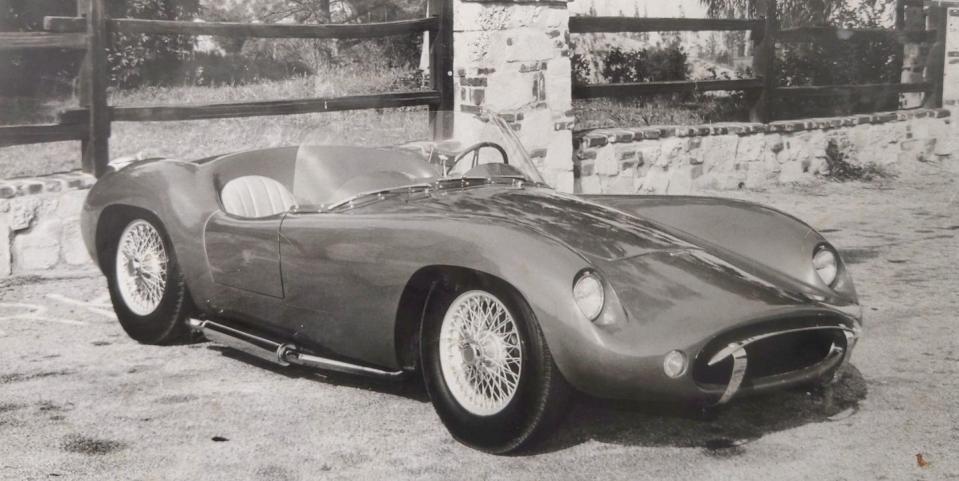
Kirkistown Airbase, Northern Ireland, 1957—After the men had chased the cattle off the tarmac, they turned to their work. The big-bore straight-six from a Jaguar D-Type barked to life, fitted in a chassis naked save for engine, controls, and a seat. The American drove off, and the two Ulster-born engineers stood with arms folded. The cattle watched and chewed their cud. History, and heartbreak, were in the making.
The chassis was cutting-edge. It had a 90-inch wheelbase and fully independent suspension all around—motorcycle-derived dampers and double wishbones up front and a de Dion rear axle with a limited-slip differential. The brakes were Girling discs, the rears mounted inboard, and the engine sat aft of the front axle. The steering was rack-and-pinion, two turns lock-to-lock. It needed only a body to be the equal of the cars that raced at Le Mans.
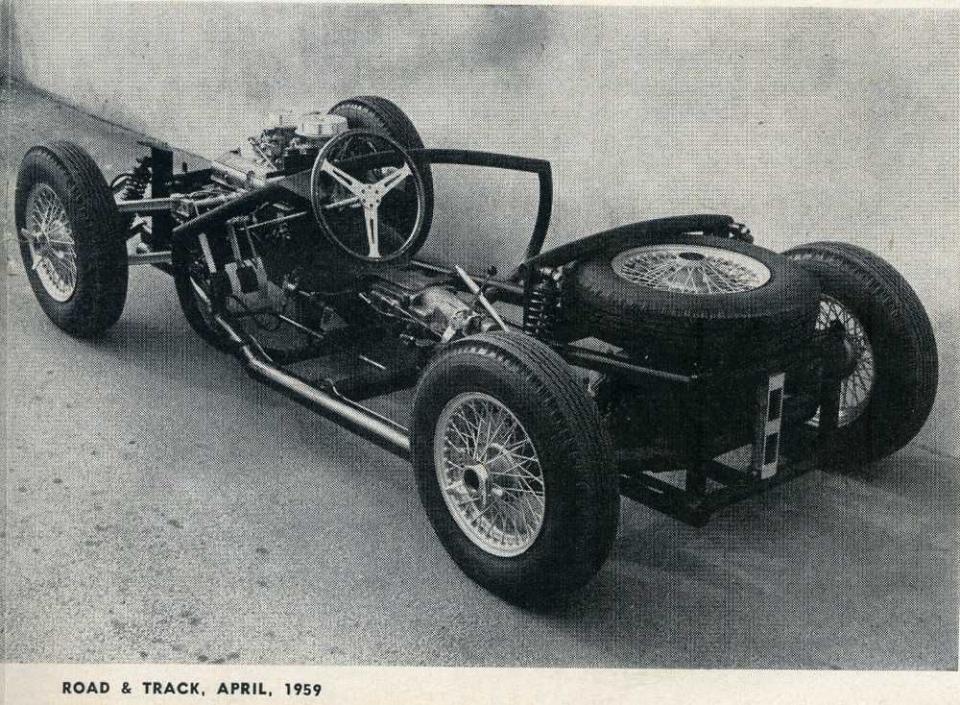
The two Ulstermen were Noel Hillis and Malcolm MacGregor. Both were experienced racers in their own right, on two wheels and four. The American was Bill Devin, a SoCal hot-rodding and racing legend and a contemporary and friendly rival to the likes of Dean Moon, Max Balchowsky, and Carroll Shelby. The chassis was a prototype. The partnership would go on to create the Devin SS: a California-made body, a chassis built in Belfast, and a 290-hp Chevy 283-ci V-8 under the hood.
Half a decade later, Carroll Shelby would produce the first 289-ci narrow-bodied Cobras. A Corvette-powered Devin SS could eat a Cobra for breakfast, fried up with bacon, eggs, sausages, black pudding, potato farls and soda bread. Actually, that might be a slight exaggeration, but the Devin was slightly lighter than the Shelby, slightly more powerful, and had more accurate steering. Period testing shows the Devin SS achieving acceleration times as quick as 4.8 seconds to 60 mph, about a second quicker than the Cobra.
That this kind of world-beating performance would hail from Northern Ireland seems unlikely, but it's not. Norn Iron, as its people call the place, has always punched above its weight in motorsport. Ask Paddy Hopkirk about the tin of black-market caviar he ferried from behind the Iron Curtain while winning the 1964 Monte Carlo Rally, or stand on the mountain at the Isle of Man TT and see that the only statue there is of motorcycling legend Joey Dunlop, the King of the Roads. The people of Ulster are bright, blunt, stubborn, and fearless. They love calling literally everything "wee," and they love going fast.
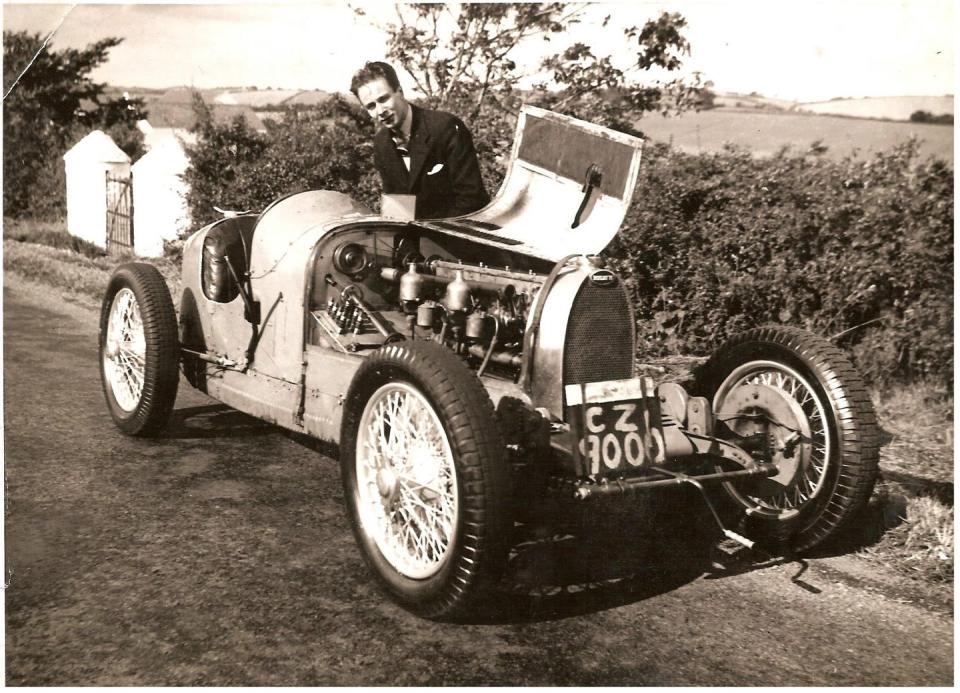
Hillis and MacGregor came from this stock. Both were in the textile trade; Hillis the owner of a company, MacGregor a lead engineer and employee. The latter was much younger, but the men bonded over racing. Hillis was a committed enthusiast with deep pockets, owning Bugattis and Maseratis, and winning the first race held in post-war Ireland at Ballyclare, in 1946. Malcolm started out racing motorcycles.
Both men thought they could create a car that could take on the world's best. Having built the chassis, they sent a letter to Bill Devin.
At the time, Devin was the world's foremost builder of fiberglass car bodies. Because of its later association with shoddy kit cars, fiberglass is sometimes regarded with disdain, but think instead of Bruce Meyers and his Manx showing up and setting records on the dunes. In the Fifties and Sixties, fiberglass was lightweight and effective. It's rumored that Meyers took inspiration and advice from Bill Devin.
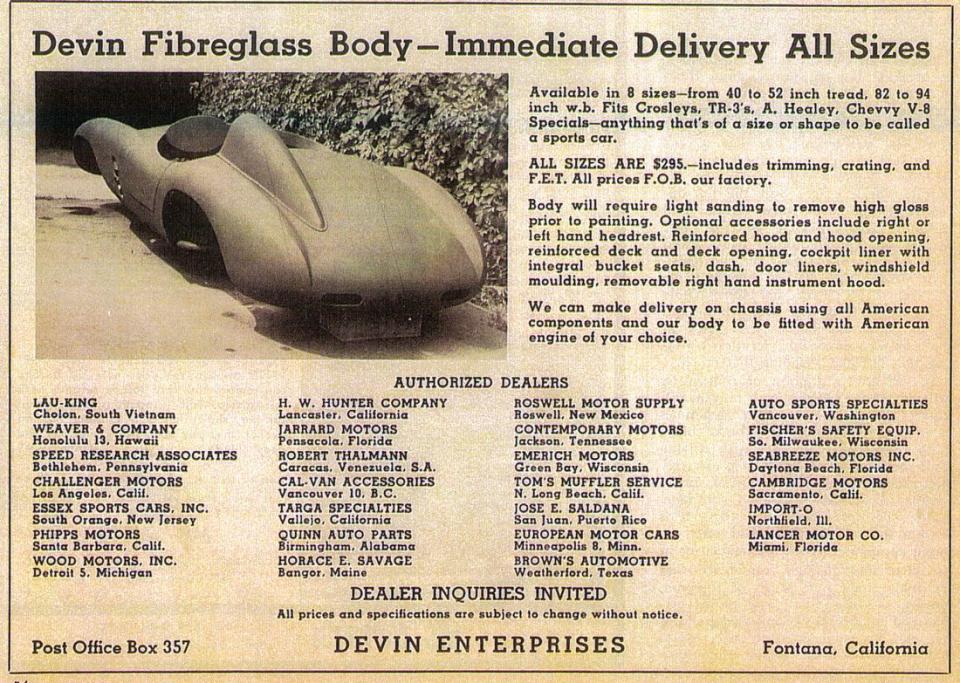
Bill Devin was something of a mechanical genius. As a boy, he built a go-kart out of a metal road sign and the motor from a gas-powered washing machine. He worked on the production line for the Douglas A-20 Havoc, and was a mechanic in the U.S. Navy during World War II, working on amphibious assault transports.
He owned an ex- Phil Hill Ferrari 212, which he raced in the early Fifties, and travelled to Modena with Luigi Chinetti, the founder of NART. There, Devin, found the Ferrari 250MM he had ordered to race at Le Mans wasn't ready yet. He bought a different Ferrari, brought it back to the U.S., and eventually sold it, taking a small Deustche-Bonnet in trade. This he modified with motorcycle parts, inventing the very first overhead camshaft timing belt in the process. He did not patent the technology.
Devin Enterprises was formed in 1954, and began selling fiberglass bodies shortly thereafter. The pattern was lifted from a Scaglietti-bodied little Italian car called the Ermini 357, and could be fitted to the frames of various cars from MGs to Fords. The business grew, along with Devin's reputation. His D Specials, which he fitted with 1600cc industrial-application Porsche engines, were very successful in racing—until Porsche found out and told Devin's supplier to cut him off. In the hands of racer AK Miller, Devin-bodied specials won the Pikes Peak hillclimb six times between 1958 and 1966.
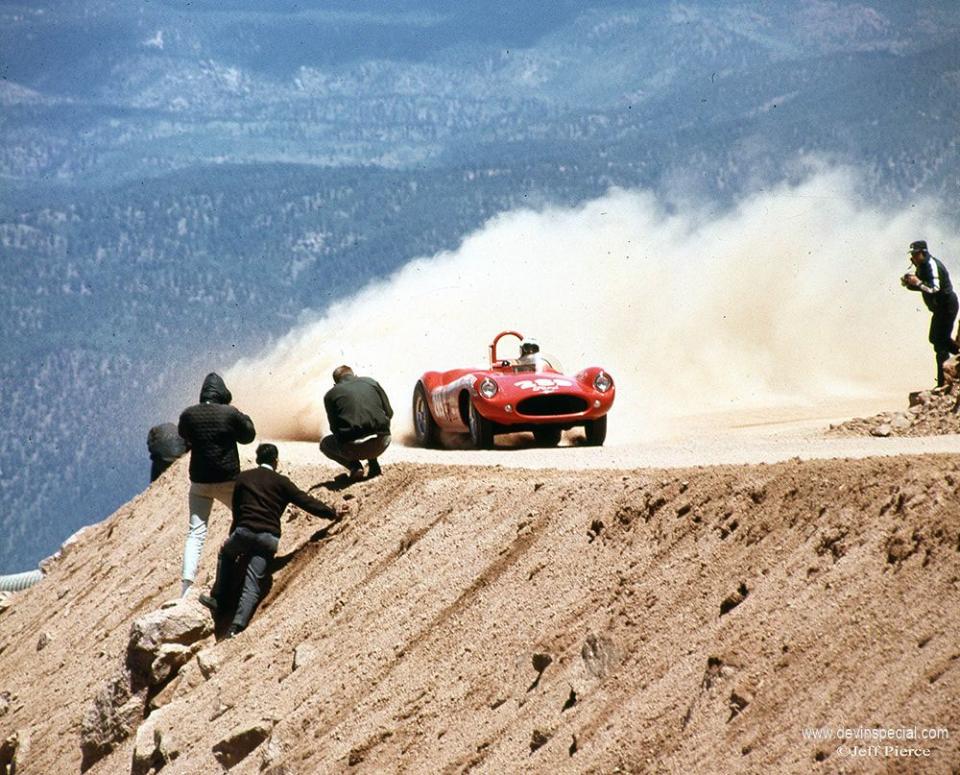
When Bill Devin returned from testing Hillis and MacGregor's chassis, he was spattered with cow shite but up to high doh, as the Irish would say. This was the foundation he had been looking for to build a ground-up car with his name on it. The men formed a partnership. A modified, 92-inch version of the chassis would be built by Devonshire Enterprises in Belfast, then shipped to California to be fitted with Corvette running gear, with the engines modified with input from Bill's friend Dean Moon.
In April of 1959, Road & Track covered the Devin SS. We wrote: "Devin's plans are to produce enough cars (150) to meet SCCA production requirements. If this comes about, the GT Ferrari and Corvette owners can kiss that first-place cup goodbye. Imagine, if you will, the performance of a near 2000-pound car (which the Devin is) with a 290-horsepower fuel injection Corvette engine."
The Devin SS was a Cobra before the Cobra. Though it was built as a street car, some examples had success racing against the likes of the Maserati Birdcage. There are rumors that GM bought one and took it apart, looking for clues to apply to the next-generation Corvette.
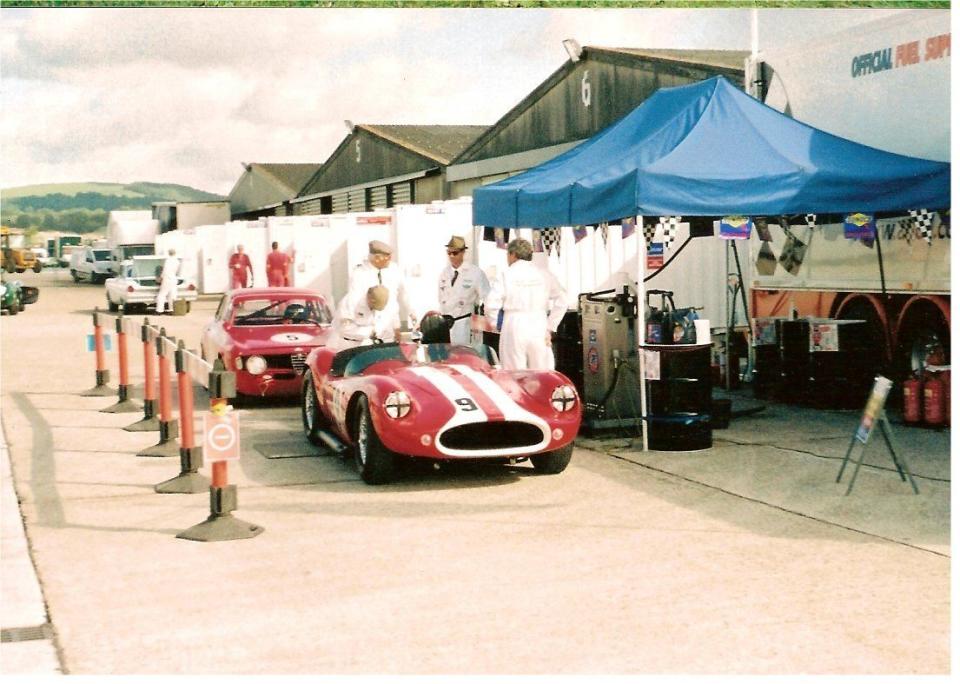
But the SS wasn't a financial success. The price, $5950, was less than the cars ended up costing to make. Material suppliers like PPG demanded bulk orders that far exceeded what a small outfit like Devin could afford, and there were delays. Hillis took a dangerous financial risk, extending his other businesses to pour funds into his passion project. The engineering was there, but the marketing wasn't.
Devin Enterprises went bankrupt just as a large shipment of chassis arrived from Belfast. The shockwave of the financial loss echoed throughout Hillis' businesses, crippling them and wiping out his fortune. MacGregor eventually took an offer to work for Ford, where he was quite successful. Sixteen Ulster-made chassis in total, including the prototype, ended up in the U.S. A handful more remained in Europe. MacGregor managed to hang onto one, but was never able to fulfill the dream of owning a finished example of the car he had engineered.
Yet thanks to the work of Devin enthusiasts Kevin Callaghan and Kreg Jones, that chassis has escaped obscurity. Just before the COVID pandemic, MacGregor's chassis was purchased from his estate and shipped to Pennsylvania. Jones founded the Devin registry a decade ago and is an expert and historian of the marque. Callaghan recently purchased the assets and rights of Devin Sports Cars, LLC. He's helped other Devin owners source replacement parts for their cars, and plans to display the Ulster chassis in his company's showroom in Abington, PA.
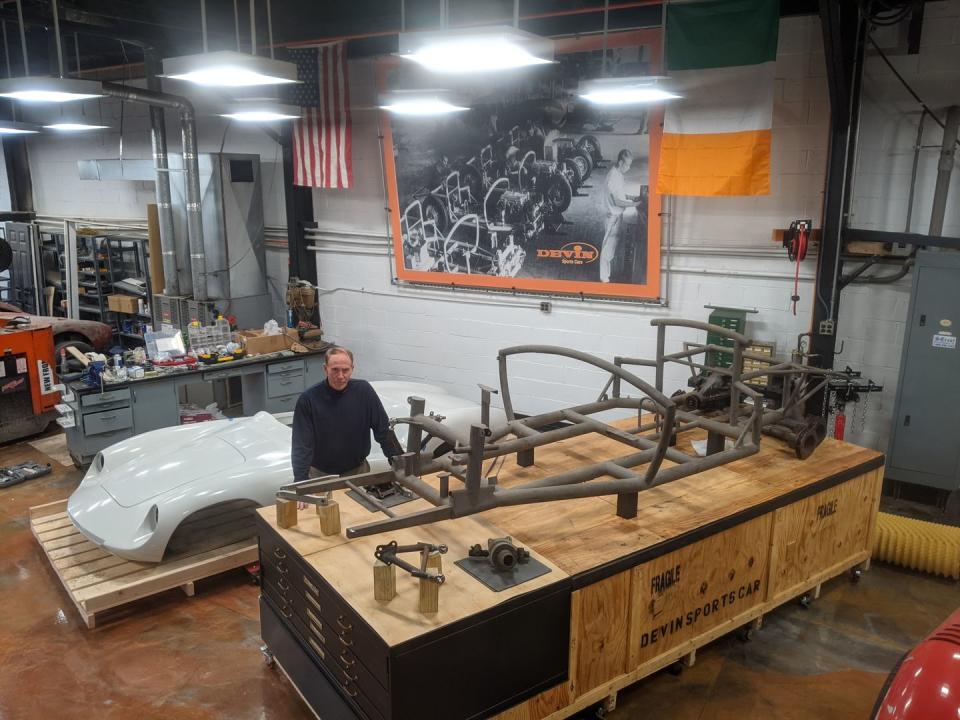
Bill Devin would go on to re-engineer the SS chassis and build a few updated examples in California. The Devin community at large is open and enthusiastic, but SS models are worth significant amounts, and thus, owners tend to be a bit secretive. How many completed cars exist, and their provenance, is a bit tricky to navigate. But they're out there.
Before the Shelby Cobra, there was the Devin SS. A sliver of automotive history, and a story of a dream slipping through fingers. Three men standing in a disused airfield just outside Belfast, grins on their faces, at the start of something. What might have been. What was.
You Might Also Like

 Yahoo Autos
Yahoo Autos 